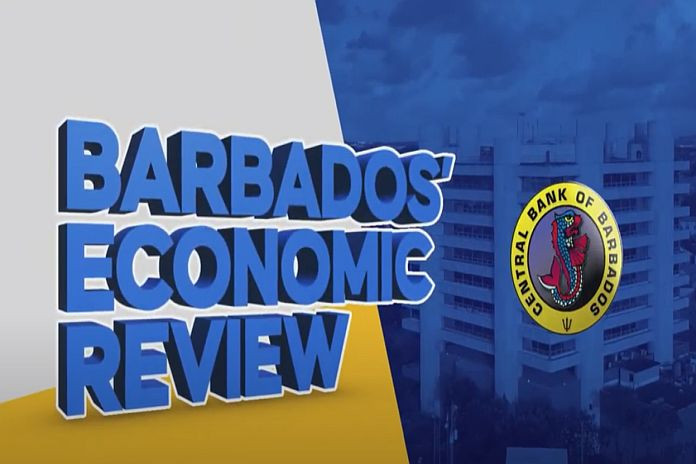By Central Bank of Barbados
BRIDGETOWN, Barbados – The performance of the economy during the first six months of 2023 underscores Barbados’ resilience in the face of unfavourable global developments. Real GDP is on track to grow by about 4 to 5 percent in 2023, contingent on a continued recovery in tourism activity and increased private sector investments.
With respect to tourism, forward bookings for the remainder of the year are encouraging. The return of a full Crop Over festival itinerary and the anticipated opening of the Wyndham Sam Lord’s Hotel are expected to boost demand for the destination in the coming months. The sharing economy is also expected to contribute to the stability of tourist arrivals by continuing to attract a visitor segment less interested in the traditional hotel experience. Local tourism stakeholders are attempting to address the airlift challenge into Barbados, a factor, which, along with airline ticket prices well above pre-pandemic levels, remains one of the key barriers to the full recovery in visitor numbers.
The other sectors of the economy should continue to benefit from the strong tourism performance and construction activity. A projected expansion in construction in the second half of 2023 is also expected to aid output growth in the non-traded sectors and assist with employment growth.
Inflation should improve in the medium term on the back of declines in international commodity and energy prices over the first half of this year. The fall in these key commodity prices has already stabilised the imported component of inflation. As a result, domestic inflation is expected to decrease to 5 percent or below by year’s end should current international prices be maintained or decline over the second half of 2023. However, the June announcement by the OPEC+ grouping of its intention to further cut crude oil production through to 2024, as well as the potential of the Russian-Ukraine war to continue to disrupt grain supplies present significant downside risks. Other geo-political risks remain. For example, cyber-attacks can adversely impact critical national infrastructure and essential services in trading partner countries.
Gross reserves remain at historic levels but are expected to decline modestly over the second half of 2023. This projected decline should be driven by the continued expansion of the domestic economy, which is expected to increase the demand for foreign exchange. Reserves are still expected to be well above the internationally accepted threshold for reserve cover by year-end 2023.
Anomalous warm temperatures in the Atlantic promise more frequent and intense storm activity. The forecasts of rising global temperatures indicate the likelihood of stronger storm activity, which can negatively impact food crop production and damage infrastructure. It is therefore imperative that efforts towards ensuring food security are continued and disaster mitigation and management systems are fortified. The focus on attracting climate-related financing is expected to yield results over the medium term and will assist in improved climate resilience.
The government has indicated its continued commitment to meeting all targets set under the BERT-2022 IMF-supported programme. By the end of fiscal year (FY) 2023/24, the fiscal deficit is projected to reach 1.8 percent of GDP, while the primary balance is forecast to record a surplus of 3.5 percent of GDP. The achievement of the primary balance target depends on continued economic activity bolstering revenue collections throughout the rest of the fiscal year, with expenditure remaining in line with targets.
Barbados’ public sector debt remains on a sustainable path despite interest rate hikes in industrialised countries. Foreign borrowing will need to continue in the short to medium-term as Government implements plans to revive the local bond market by diversifying the range of available instruments. Even inclusive of this projected borrowing, the debt-to-GDP ratio is forecast to halve to 60 percent by FY2035/36.
Credit from deposit-taking institutions (DTIs) should provide continued support to businesses and individuals for the remainder of the year. Loans to households may increase as the year progresses on the strength of higher demand for mortgages and the need for greater renewable energy capacity. Credit quality should also continue to improve as economic activity expands and facilitates the settlement of debts. Capital buffers for most depository institutions remain at comfortable levels, serving as a safeguard against potential domestic and global shocks. At the same time, the financial sector faces the challenge of deploying the excess liquidity in the financial system in a way that is both profitable and prudential.
The transition towards a fossil-free economy by 2035 remains critical in the medium to long-term. Recognising the importance of imports to the sustainability of the external position, investments in renewable energy will help to reshape the composition of imported goods, eventually resulting in a shift away from fossil fuels. Over time, the net savings stemming from this transition are expected to become more prominent, showcasing the substantial economic advantages associated with this pivotal shift.
To secure a sustainable and prosperous future we must continue to invest in renewable energy, agriculture, and technology to foster resilience and create new opportunities for growth. Continued collaboration between the public and private sectors is critical to achievement of fiscal and debt sustainability and the promotion of climate-resilient economic development.





